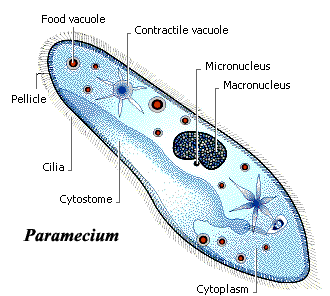
The S in MRS GREN, sensitivity, stands for the ability of all living things to detect changes in their environment. To do this we use our senses, a characteristic dating back to virtually the beginning of life. Even simple, single celled organisms can sense their environment and respond to it.
But, importantly, the way each species senses is different, depending on the environment in which they live. This has driven animals to adapt and evolve an incredible range of senses.
Paramecium is a simple, single celled organism, but even that can respond to its environment. Paramecium maintains an action potential across its membrane, when it ‘bumps’ into something, the action potential changes, causing the cilia surrounding the cell to change direction and move away. This is one of the simplest ways to sense the environment, but it suits the Paramecium’s needs very well.
For other species, their needs are greater. As the complexity of the environment increases, so too does the need for a more complex sensory system. For humans, we rely heavily on our sight, a sense 96% of animal species have.
On a molecular level every eye works the same. A photo-receptive molecule called Rhodopsin responds to light by changing shape. It is this subtle change in molecular shape that forms the basis of every eye on the planet.
The human eye is much more complex, and delivers a sophisticated cocktail of information to our brains. The only group of animals with a similar degree of sophistication are the Cephalopods. They too have a complex camera eye and large brains. However our common ancestor with the Cephalopods had neither sight, nor a large brain.
Is it coincidence that these two traits appear together? Professor Cox ends with the following: as the sensory information we receive increases, so too do our brains as we try to process that information. Having a large brain increases are desire for information and that is the making of humans as we know them today.
Finally, a good friend of mine has recently started a blog on scienceblog.com. Ben is currently working on his PhD at the University of Manchester, having recently graduated in Molecular Biology. Click here for DNAwesome. Thanks!
